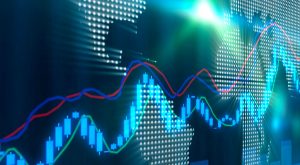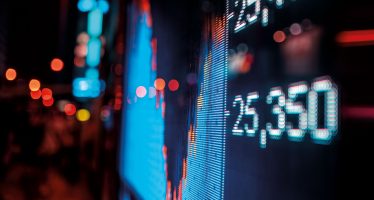Evan Harvey, Nasdaq: A Short-Term Look at Long-Term Growth – The Expert Outlook on 2017
 Given the rapidly changing state of our global economic and political picture, it can be daunting to integrate sustainability strategies into business practices. This has ever been the case, but perhaps the tension between short-term deliverables and longer-term principles is perilously high. I put this theory to the test by asking a few colleagues to peer into the future with me, hoping to find a common vision for companies, investors, and analysts.
Given the rapidly changing state of our global economic and political picture, it can be daunting to integrate sustainability strategies into business practices. This has ever been the case, but perhaps the tension between short-term deliverables and longer-term principles is perilously high. I put this theory to the test by asking a few colleagues to peer into the future with me, hoping to find a common vision for companies, investors, and analysts.
I wanted to know, first and foremost, if companies, investors, and other stakeholders are even measuring the right things. So I asked my expert panel about the current state of sustainability reporting and if they expected anything different in 2017. Dr Anthony Miller, economic affairs officer at the UN Conference on Trade and Development – and one of the architects of the Sustainable Stock Exchanges Initiative – was the first to respond.
“When I’m asked questions about sustainability,” Dr Miller said, “I try to think of the parallel question for traditional financial issues. Despite a 100-year debate in the accounting and finance community about good performance indicators, every unforeseen major market correction creates controversy about some metric that might have foreshadowed financial troubles, if only we’d paid closer attention. We have to expect the same kind of continuous learning and evolution with sustainability. What we measure now may be rudimentary, but it’s certainly better than what we had twenty years ago. So, we are moving in the right direction and 2017 will bring more focus on material disclosures, especially related to issues of climate change.”
“Companies are still at different levels when it comes to addressing sustainability. The laggards are stuck at limiting their efforts to compliance, and the more advanced think of it as protecting the company’s reputation and then as risk mitigation.”
Dr Todd Cort is a lecturer in Sustainability at the Yale School of Management and author of numerous papers on sustainability metrics and business impact. He turned my question on its head.
“The key to this question is the audience,” Dr Cort said. “I think companies are the closest followed by investors. We are all honing in on the most material indicators for companies and investors as evidenced by the fairly conclusive correlations between sustainability indicators and financial performance. However, we have a ways to go to get to the metrics level (i.e. we know that indicators such as ‘water use’ are material, but have less idea what metrics should be used to measure water use). However, I think we are a ways off on the other stakeholder indicators. Here I will point to the intersection of politics and sustainability and note that people are dissatisfied. Companies are still seen as corrupt, evil, etc. Investors are ‘the swamp’. Government is not trusted. Clearly, there is a gap between the indicators that society holds valuable and those measured by companies and investors.”
“For the environment, and the measurement of indicators against planetary boundaries and other scientific thresholds, I think we have made little headway, but will point to efforts to integrate natural and social capital as a good sign. For 2017, I see some very sweeping changes afoot which will challenge our preconceptions of sustainability and what matters to society. But at a more practical level, I think 2017 will see substantial changes in our understanding of some key sustainability metrics. Specifically, I think we will move toward a better understanding of social and natural capital, we will improve accounting controls on some sustainability data sets that will allow a move toward integrated reporting, and we will see a movement toward data as a public good which will allow greater access and mobility of ‘responsible’ investments.”
Robert Dornau, senior manager of Sustainability Services for RobecoSAM, also focused on the audience. “The big topic from an asset manager perspective is impact,” Mr Dornau told me. “Companies are still at different levels when it comes to addressing sustainability. The laggards are stuck at limiting their efforts to compliance, and the more advanced think of it as protecting the company’s reputation and then as risk mitigation. The last big wave was about integration of sustainability issues into the business case. In order to measure sustainability performance, RobecoSAM wants to see that companies link material issues to their business case, publicly report on KPIs and targets, and measure and report their performance against those targets.”
Mr Dornau believes that company KPIs (key performance indicators) should be directly linked to executive compensation: targets for pollution, energy use, green product innovation, accident rates, and so on. “Leading companies move beyond their own business and have concrete programmes to address environmental or societal needs,” he said.
RobecoSAM now asks about impact measurement and valuation in about one-third of its industry-specific questionnaires and will broaden that approach to more industries in 2017. Impact valuation in particular – identifying and valuing the externalities of company actions – is only done by about 20% of global companies, according to Mr Dornau, but another 8% are working on credible programmes for the future.
Will sustainability metrics mature into fully actionable financial disclosures in 2017?
Anthony Miller: “Depending on the metric and the industry, I think sustainability information is already an actionable financial disclosure today. Indeed, it has been for a few years now. Different companies and industries may have very different sustainability footprints, but investors are focused on climate risk. For example, understanding how a company can disconnect earnings growth from emissions growth is a vital, forward-looking metric that many investors want. We can also unpack the term ‘sustainability metrics’ to include not just information produced by a company, but information produced by other sources that affects a company or industry. For example, if you are an investor in a company that produces road salt for municipal customers to de-ice roads, then warmer winters with fewer days of snow cover are today having a material impact on revenues.”
Todd Cort: “I think the answer to this question is dependent on the investor. Some investors might argue that they have fully actionable metrics already. More mainstream investors and hedge fund managers may be the last holdouts, but even there we will see a handful of sustainability metrics integrated into a buy/sell dashboard. Greenhouse gas emissions, for example, may impact correlation coefficients, beta, risk adjusted cash flow, and so on. I think many of the large asset managers are already testing some of these metrics.”
Robert Dornau: “Some parameters – GHG data, male/female remuneration, CEO-to median-compensation – have already become mandatory disclosure items in certain jurisdictions. However, the standardisation of broader metrics into financial disclosures is not to be expected in the short term. RobecoSAM has twenty years of experience in translating intangible sustainability data into a comparable score, allowing us to evaluate the investment universe and rank companies, but not everyone can do so effectively.”
In terms of turning sustainability performance and measurement into financial instrumentation, where are the innovations likely to be in 2017?
Anthony Miller: “The exponential growth of green bonds seems set to continue for the next few years. Though slightly less prominent, equity indices and products based on them will remain the most popular sustainability financial instrument. We should expect integration of ESG strategies to deepen into other financial products both on and off the publicly traded markets. Yield-cos and REITs, while not explicit sustainability instruments, have certainly been growing in popularity as well.”
Todd Cort: “We’re at an interesting decision point on green bonds. The movement towards standards is good, but I also think there will be more publicly available data and proxy data to bring the cost of labelling down. So the green bond market may rise yet again, but at a more moderate pace than many of our original expectations. Green Banks offer an interesting new financial model for green (and soon social) investments. I would also look at the micro-generation of renewables (solar and renewable thermal technologies) since the infrastructure for sales and delivery is already developed.”
Robert Dornau: “There is clearly a trend away from active into passive investment. We see growing interest in the combination of Quant and ESG analysis. More investors are focused on long-term company growth. A longer-term focus looks at KPIs like variable compensation – and not just at the top, but also below senior management level. S&P Dow Jones Indices uses our economic score in combination with a financial quality score to select companies for its Long-term Value Creation Index, which has attracted a lot of capital from pension funds and interest from other investors, too.”
As we move into 2017, do you think most companies doing sustainability work are motivated by risk mitigation or revenue potential? Is one approach any more “authentic” than the other?
Anthony Miller: “Risk mitigation and revenue potential are, to some extent, two sides of the same coin. Many start-ups and young companies are innovating sustainability solutions, so we might be tempted to say they focus on revenue while larger, more mature firms focus on risk. But many large firms now have one or more divisions that look very much like sustainability start-ups. They are driving revenue by solving 21st century sustainability challenges. Whether one approach is more ‘authentic’ than the other is an interesting question. The key issue is how committed and financially invested the firm is in the particular sustainability work they do. If it’s seen as a necessary evil, then it will always be at risk. If it’s seen as core business, then it will go from strength to strength.”
Todd Cort: “I have no scientific evidence to back this up, but my strong sense is that risk management predominates sustainability metrics. One look at GRI, or SASB, or any other similar enterprise shows that impacts and risk mitigation are the predominant metrics – with opportunity a distant second. But I would also argue that more corporate activity focused on doing good sits just below the radar. Some companies (Tesla, Natura) can generate a lot of attention, but the bulk of the activity is in the long tail of distribution. Smaller companies tend to have a very small influence on politics, so we may continue to see an uneven playing field: More sustainable companies will have to fight both the market and the regulatory environment for their share.”
Which sustainability metric is the best driver of change right now?
Anthony Miller: While some sustainability metrics are material for everyone, the key drivers of change are often industry-specific. Particulate emissions for diesel was a break-out sustainability metric following the emissions testing scandals in recent years. This is something that many in the automotive industry will be keeping a keen eye on as more data comes in on the negative health impacts of localised urban pollution. We should expect similar metrics to emerge in other industries that face acute sustainability challenges. Beyond risk mitigation metrics, when we think of companies that are producing solutions to sustainability challenges, then the key sustainability metric is really a financial metric, i.e. how fast these companies are able to grow revenues, expand margins, bring down costs. When we look at a clean energy company or an electric car company, we’re not asking what their emissions are, but what their financial growth is.”
Todd Cort: “It’s difficult to say, but I think a robust and simple dollar figure on natural capital could be a wake-up call for states and nations on the rate of their capital depletion and the limitation on growth. My second vote would be a threshold metric on income inequality or the GINI coefficient. We have been pushing companies to measure environmental impacts against planetary boundaries, and I think there will be enormous pressure on companies to start thinking about their impact against global social boundaries. Income inequality seems globally relevant to me right now and something we might ask companies to start measuring and addressing.”
Robert Dornau: “While we would like to see companies ready themselves to evaluate real impact, it is still too early to say. As the numbers show, only about a quarter of the companies have some idea on how to do this in terms of qualitative or quantitative valuation. But clearly this is emerging and will be separating the leaders from the followers in the years to come.”
About the Author
Evan Harvey is the Director of Corporate Responsibility for Nasdaq. He also serves on the Board of Directors for the UNGC US Network and chairs the Sustainability Working Group at the World Federation of Exchanges.
You may have an interest in also reading…
Evan Harvey, Nasdaq: The Board Perspective on ESG
Sustainability is a moving target. Though we might want uniformity, unanimity, and harmonisation — of standards, disclosures, and data points
Danièle Nouy: Getting Tough with Bankers
It is her job to keep Europe’s banks on the straight and narrow and remind their executives that honesty pays.
United Kingdom – Splitting Rage Takes Root
For all admiration the British nation inspires, anglophiles and others slightly less impressed are wondering what is wrong with the


















































































